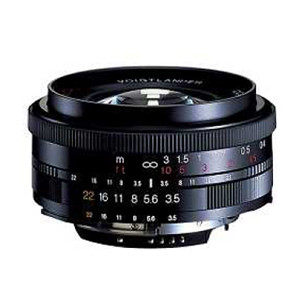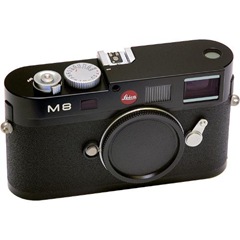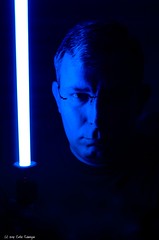After reading my previous blog entry “A Morning with Capture Integration”, the folks at Digital Technology Group (DTG) invited me to their suite at the Graphics of the Americas expo held in Miami Beach for some “hands-on” time with the Hasselblad H-System.
DTG is based out of Tampa, FL and is the local Hasselblad (and Alpa) dealer (among many other things) here in Florida. That is saying a lot. Florida is the 4th largest state in the USA and Miami-Dade County is twice the size of the state of Rhode Island all by itself. It’s a big area to cover and I appreciate their inviting me over.
I have previously spoken about the Hasselblad H-System, but this was my first “hands-on” session that wasn’t rushed by a crowd of slavering photogs hoping to get a chance to fondle $30K worth of camera. Just me (and Jordan Miller from DTG and Greg Hollmann and Gina Connor from Hasselblad USA) and the H-System for two hours.
Impressions
Most digital medium format systems are generally larger/heavier than 35mm digital counterparts. At first blush I would have said the same thing about the H-System and the H3DII in particular. Metal barrelled lenses, a hefty looking camera body with a large viewfinder and digital back all add up to weight. In my hand, however, the H3DII balanced perfectly. Granted, if I slapped on the largest zoom they brought it felt a bit more cumbersome, but it was no worse than my D700 + MB-D10 Grip + 70-200 VR lens. In fact, the H3DII was actually shorter and easier to handle that my Nikon due to the design of the grip which places the hand fairly close to the center of balance on the system, even with a zoom mounted.
Even though some folks complain about the H3 being a “closed system” (only Hassy H3 parts/lenses can be used in the system), I don’t view this as a bad thing. Heck, this formula has been working for Apple for years. As I have said before, this is the “Macintosh of Medium Format.” I also checked with Jordan and he confirmed that the H3 digital backs are compatible with Alpa Technical Cameras. The only gotcha here is that the H3 back is powered by the H3 body so you would have to purchase the optional ImageBank or tether the back via Firewire to you Mac/PC in order to power it. On the plus side, you don’t have to use a wakeup cable with the H3 backs like you do with the Phase-One backs.
Alpa TC + Hasselblad 39 Mpx Digital Back courtesy of Dr. Bob Moore
The Hasselblad system allows an unprecedented level of integration between components. I should point out that the term “unprecedented” applies to the medium format realm. This sort of thing has been the norm in 35mm DSLRs for years now. Chipped lenses passing image telemetry back to the sensor is currently in it’s first generation in medium format world. Upcoming systems, like Leica’s S2, promise even tighter integration between components.
So what does this mean image-wise?
Chipped lenses can pass critical distance information along with any kind of optical correction info back to the sensor. I imagine that in future versions of the lenses, factory testing will load sample specific optical correction data into the lens’ chipset allowing the camera to apply adjustments specific to the lens being used, not just generic corrections for the entire lens series.
Hasselblad digital backs only record images in their native RAW format. No other format option is available. The only software package that can process those images is Hasselblad’s Phocus software for Mac/PC (sorry Linux crowd). This would be a problem if Phocus sucked, but fortunately Hasselblad but just as much time and effort into the software as they did to the hardware/firmware.
Phocus is a full on 64-bit multi-core aware image processing application. Considering that is has to cope with hundreds (if not thousands) of images starting at 31 megapixels all the way up to 50 megapixels (and very shortly, 60 megapixels), Phocus is designed to handle large amounts of big images. Also keep in mind that most, if not all, medium format digital backs record in 16-bits per color channel (that’s 64K shades of RGB = 28 trillion colors).
[EDITOR'S NOTE: Apple Aperture 2 does read 3FR files from the H3D & H3DII-31. DAC information is not used by Aperture but all other data is. Hopefully Apple will add support for all Hasselblad H Digital Backs in the near future.]
DTG was kind enough to provide me access to Phocus and some sample images to work with. The cameras used for comparison are:
Hasselblad H3DII-50
100mm f/2.2 lens (roughly 50mm equivalent)
ISO 50 (lowest possible setting)
Shot native format (3FR) and converted using minimal adjustments.
vs.
Nikon D700 (12 Mpx)
CV 58mm f/1.4 lens (The Nikon D700 is a full frame camera)
ISO 200 (lowest setting)
Shot native format (NEF) and converted using minimal adjustments.
These two tiny jpegs (Hasselblad on the right, Nikon on the left) do not do either of these cameras justice. To truly appreciate the images one must see them in full size. Here are links to the full-sized images:
Nikon image
Hasselblad image
Remember, these are 24-bit jpegs (8-bits per channel) and as such have lost a lot of the color information captured by both cameras. The Nikon normally captures 12-bits/channel and can be pushed to 14-bits. As mentioned before, the Hasselblad captures at 16-bits/channel. And just in case you are thinking that 2-4 bits difference is no big deal,
every bit doubles the number of colors captured by the sensor.
Hasselblad employs a central leaf shutter system which gives the H-System flash compatibility at all shutter speeds with the drawback that the system is limited to a max shutter speed of 1/800s which is not a big deal in the studio, but may require use of neutral density filters if used wide open for landscapes. This is not a sports camera.
Conclusion
The Hasselblad H-System is a solid piece of engineering. Well-balanced and built like a tank, it provides the photographer (who can afford it) a truly spectacular tool for capturing images. Hasselblad’s system approach is a love/hate kind of thing. If you love that kind environment, then this is the camera for you. If you’ve got a bit of William Wallace in you, you may want to look at a more flexible system. I am not saying that the H-System is limiting in any way. There are plenty of choices and third party gear that can be used with the H-System, just not as many as everybody else.
The files produced by the H-System contain a staggering amount of image information and detail. So much so that portrait work may require A) a softening of the subject in order to hide skin imperfections or B) the hiring of a really, really good makeup artist (probably both.)
If you like the way Apple Inc. builds computers, you’ll fall for the Hasselblad approach. I know I want one.





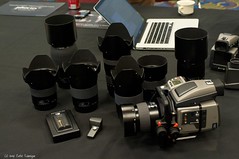

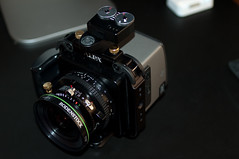

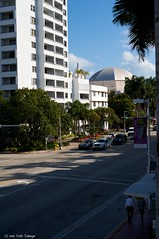
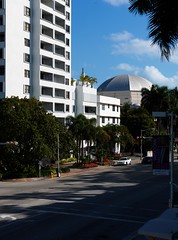
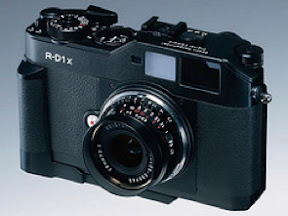 Epson originally introduced the R-D1 digital rangefinder in 2006. The camera met with lukewarm reception despite the advances. After Leica introduced the M8 did the much less expensive R-D1 really start to get popular. Now, three years after the original, Epson has reintroduced this uber-retro digital with the R-D1xG.
Sporting such new features as SDHC support (up to 32GB), a 2.5“ 23 million pixel LED lit rear display, and RAW+JPEG support, the camera retains the analog features (and quirks) that endeared it to the rangefinder crowd.
Epson originally introduced the R-D1 digital rangefinder in 2006. The camera met with lukewarm reception despite the advances. After Leica introduced the M8 did the much less expensive R-D1 really start to get popular. Now, three years after the original, Epson has reintroduced this uber-retro digital with the R-D1xG.
Sporting such new features as SDHC support (up to 32GB), a 2.5“ 23 million pixel LED lit rear display, and RAW+JPEG support, the camera retains the analog features (and quirks) that endeared it to the rangefinder crowd.


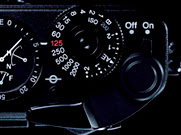 Fully compatible with all M-mount lenses (and Leica Thread Mount via adapter) gives the R-D1xG over 200 lenses to choose from.
Manufactured by Cosina for Epson, the camera is expected to ship on 4/9/2009 in Japan. Expected price is ¥299,000 (around $3000 USD).
Fully compatible with all M-mount lenses (and Leica Thread Mount via adapter) gives the R-D1xG over 200 lenses to choose from.
Manufactured by Cosina for Epson, the camera is expected to ship on 4/9/2009 in Japan. Expected price is ¥299,000 (around $3000 USD).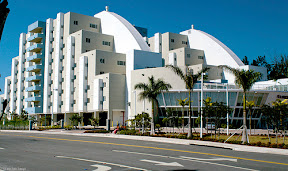 This is a six shot stitch using my Hartblei 45mm Super Rotator lens. Useful for perspective control and architectural photography.
PAW #5
This is a six shot stitch using my Hartblei 45mm Super Rotator lens. Useful for perspective control and architectural photography.
PAW #5
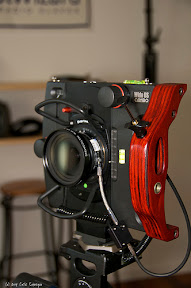 This is a shot of the Cambo Wide DS Technical Camera. Technical cameras are used for architecture and landscapes but the shift mechanism is incorporated into the body of the camera, not the lens. These cameras typically use medium format analog and digital backs.
PAW #6
This is a shot of the Cambo Wide DS Technical Camera. Technical cameras are used for architecture and landscapes but the shift mechanism is incorporated into the body of the camera, not the lens. These cameras typically use medium format analog and digital backs.
PAW #6
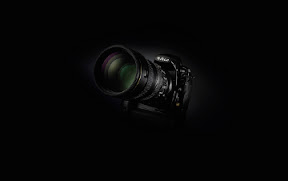 OK, this week I was hard up for a good photo, so I whipped up this wallpaper using some stock imagery from the Nikon press site.
PAW #7
OK, this week I was hard up for a good photo, so I whipped up this wallpaper using some stock imagery from the Nikon press site.
PAW #7
 Three Faces of Mel - my first attempt at a “multiplicity portrait”. Based on the work of Natalie “Miss Aniela” Dybisz.
PAW #8
Three Faces of Mel - my first attempt at a “multiplicity portrait”. Based on the work of Natalie “Miss Aniela” Dybisz.
PAW #8
 Study Hall - second attempt at multiplicity portraiture. Came out a bit better than the first one.
and now announcing
PAW #9
Study Hall - second attempt at multiplicity portraiture. Came out a bit better than the first one.
and now announcing
PAW #9
 The Corsican Knight 2 - from the 2009 Florida Renaissance Festival.
The Corsican Knight 2 - from the 2009 Florida Renaissance Festival.